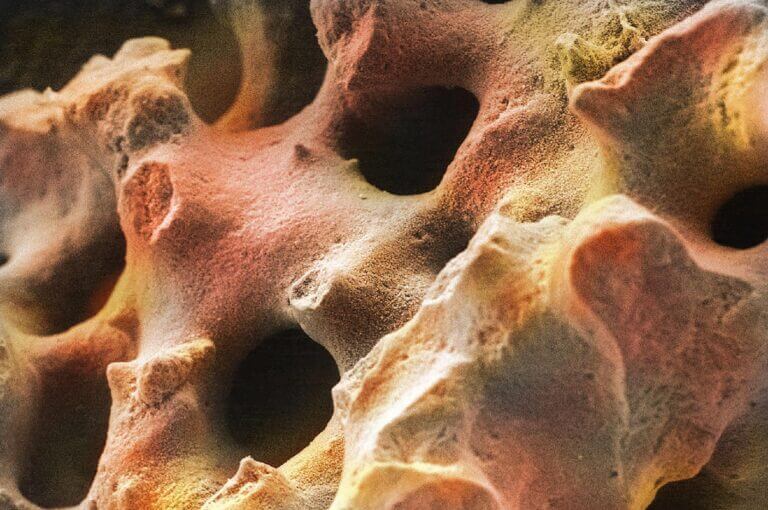Avoid Knee Surgery
As we age, our joints may start to ache, and knee pain is a common issue that many people face. In some cases, knee surgery may be the best option for treating the pain, but it is not always necessary. There are several preventive strategies and non-surgical treatments that can help avoid knee surgery.

Maintaining a healthy weight, staying active, and avoiding high-impact activities can all help prevent knee pain. Physical therapy, strengthening exercises, and anti-inflammatory medications can also help alleviate knee pain. Understanding the different surgical options and risks associated with knee surgery can help people make informed decisions about their treatment options.
Key Takeaways
- Maintaining a healthy weight and staying active can help prevent knee pain.
- Non-surgical treatments such as physical therapy and anti-inflammatory medications can alleviate knee pain.
- Understanding the different surgical options and risks associated with knee surgery can help people make informed decisions about their treatment options.
Preventive Strategies and Non-Surgical Treatments
As healthcare professionals, we understand the importance of avoiding knee surgery whenever possible. Knee surgery is a major procedure that can be painful, expensive, and require a long recovery period. Fortunately, there are several preventive strategies and non-surgical treatments that can help manage knee pain, improve mobility, and prevent the need for surgery.
Lifestyle Modifications
One of the most effective ways to prevent knee surgery is through lifestyle modifications. Maintaining a healthy weight can help reduce stress on the knee joint and decrease the risk of developing arthritis. Losing weight through a healthy diet and regular exercise can also help improve knee strength and mobility.
Physical Therapy and Exercise
Physical therapy and exercise can also be effective in preventing knee surgery. Strengthening exercises for the quadriceps, hamstrings, and buttocks can help improve knee strength and stability. Stretching and flexibility exercises can also help improve mobility and prevent injury. Balance exercises can help improve alignment and reduce the risk of falls.
Medical Interventions
In some cases, medical interventions may be necessary to manage knee pain and prevent surgery. Pain medication and corticosteroids can help reduce inflammation and swelling in the knee joint. Joint injections with hyaluronic acid or corticosteroids can also provide relief for knee osteoarthritis. Supplements such as glucosamine and chondroitin sulfate may also be effective in reducing knee pain and improving joint function.
Supportive Devices and Modifications
Supportive devices and modifications can also be effective in preventing knee surgery. Braces and assistive devices such as crutches can help reduce stress on the knee joint and improve mobility. Shoe inserts and modifications can also help improve alignment and reduce the risk of injury.
Alternative Therapies and Supplements
Alternative therapies such as acupuncture may also be effective in managing knee pain and preventing surgery. Some supplements such as glucosamine and chondroitin sulfate may also be effective in reducing knee pain and improving joint function. However, it is important to discuss these treatments with a healthcare professional before use.
In conclusion, there are several preventive strategies and non-surgical treatments that can help manage knee pain, improve mobility, and prevent the need for surgery. By maintaining a healthy lifestyle, engaging in physical therapy and exercise, and utilizing medical interventions and supportive devices, individuals can effectively manage knee pain and prevent the need for surgery.
Understanding Surgical Options and Risks

When it comes to knee surgery, there are several types of procedures available. The most common types of knee surgery are knee replacement, partial knee replacement, and knee arthroscopy. Each procedure has its own benefits and risks, and the decision to undergo surgery should always be made in consultation with a qualified medical professional.
Types of Knee Surgery
Knee Replacement: Knee replacement, also known as knee arthroplasty, is a surgical procedure that involves replacing the damaged or worn surfaces of the knee joint with artificial parts. This procedure is typically recommended for patients with severe knee damage or arthritis.
Partial Knee Replacement: Partial knee replacement is a less invasive option for patients with damage or arthritis in only one part of the knee joint. This procedure involves replacing only the damaged portion of the knee joint with an artificial part.
Knee Arthroscopy: Knee arthroscopy is a minimally invasive procedure that involves inserting a small camera into the knee joint to diagnose and treat various knee conditions. This procedure is often used to repair torn cartilage or remove loose fragments of bone or cartilage.
Potential Complications and Recovery
All surgeries carry risks, and knee surgery is no exception. Some of the potential complications associated with knee surgery include infection, blood clots, pulmonary embolism, persistent knee pain, stiffness, and limited range of motion. Patients may also experience swelling, inflammation, allergic reactions, bleeding, or other complications.
Recovery from knee surgery can take several weeks or months, depending on the type of procedure and the patient’s overall health and fitness level. Physical therapy is often necessary to help patients regain strength, mobility, and range of motion in the knee joint. Patients should also follow their doctor’s instructions regarding post-surgery rehabilitation and lifestyle changes.
Post-Surgery Rehabilitation
Following knee surgery, patients will need to engage in physical therapy to help them regain strength, mobility, and range of motion in the knee joint. The physical therapist will work with the patient to develop a customized rehabilitation plan that may include exercises, stretches, and other treatments.
Lifestyle After Surgery
After knee surgery, patients should aim to maintain an active lifestyle that includes regular exercise and physical activity. Walking, swimming, and low-impact exercise are all great options for maintaining knee function and stability. Patients should avoid high-impact activities, jumping, and contact sports, as these can put excessive strain on the knee joint.
Weight loss can also be an important part of post-surgery recovery, particularly for patients who are overweight or obese. Losing weight can help reduce the amount of weight-bearing stress on the knee joint, which can improve mobility and reduce the risk of falls and other injuries.
In summary, knee surgery is a serious decision that should be made in consultation with a qualified medical professional. While there are risks associated with knee surgery, it can also be an effective way to treat severe knee damage or arthritis. Patients should follow their doctor’s instructions regarding post-surgery rehabilitation and lifestyle changes to ensure the best possible outcome.
Frequently Asked Questions
What natural methods are effective for reducing the need for knee surgery?
There are several natural methods that can help reduce the need for knee surgery. These include losing weight, eating a healthy diet, and engaging in regular exercise. Exercise can help strengthen the muscles around the knee joint, which can help reduce pain and improve mobility. Some natural supplements, such as glucosamine and chondroitin, may also help reduce joint pain and inflammation.
Which exercises can help delay or prevent the necessity of knee replacement?
Low-impact exercises such as swimming, cycling, and walking can help delay or prevent the need for knee replacement surgery. These exercises can help improve joint flexibility, strengthen the muscles around the knee, and reduce pain and inflammation. Yoga and tai chi are also effective exercises that can help improve balance and flexibility.
What are the latest non-surgical treatments for severe knee arthritis?
Platelet-rich plasma (PRP) therapy and stem cell therapy are two of the latest non-surgical treatments for severe knee arthritis. PRP therapy involves injecting a concentrated amount of platelets into the knee joint to promote healing and reduce inflammation. Stem cell therapy involves injecting stem cells into the knee joint to promote the growth of new cartilage and tissue.
Can knee joint function be improved with gel injections as an alternative to surgery?
Yes, gel injections can help improve knee joint function as an alternative to surgery. Gel injections, also known as hyaluronic acid injections, are a non-surgical treatment that involves injecting a gel-like substance into the knee joint to provide cushioning and reduce pain. These injections can help improve joint function and delay the need for surgery.
What non-surgical options are available for elderly patients with knee issues?
Elderly patients with knee issues can benefit from several non-surgical treatment options. These include physical therapy, corticosteroid injections, and nonsteroidal anti-inflammatory drugs (NSAIDs) to reduce pain and inflammation. Assistive devices such as canes and knee braces can also help improve mobility and reduce pain.
How can knee cartilage be treated without resorting to surgical procedures?
Knee cartilage can be treated without resorting to surgical procedures through several non-surgical treatment options. These include physical therapy, weight loss, and nonsteroidal anti-inflammatory drugs (NSAIDs). Platelet-rich plasma (PRP) therapy and stem cell therapy are also effective non-surgical treatments that can help promote the growth of new cartilage and tissue.






